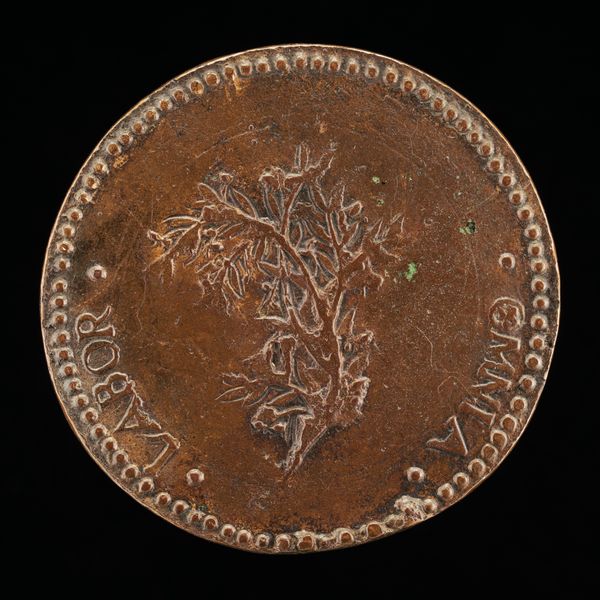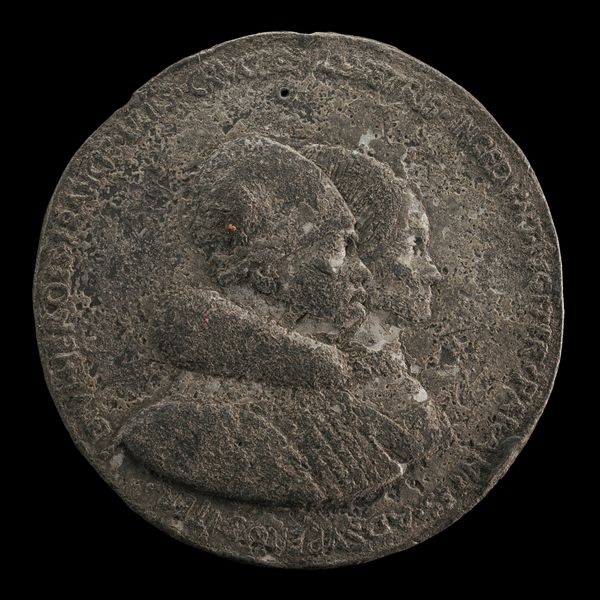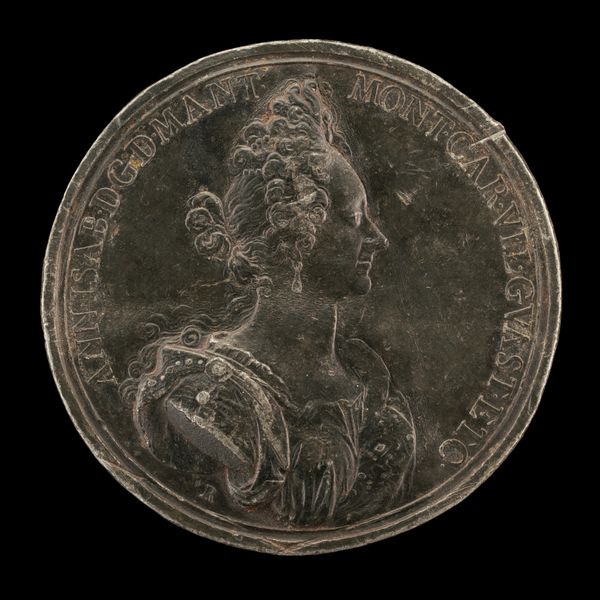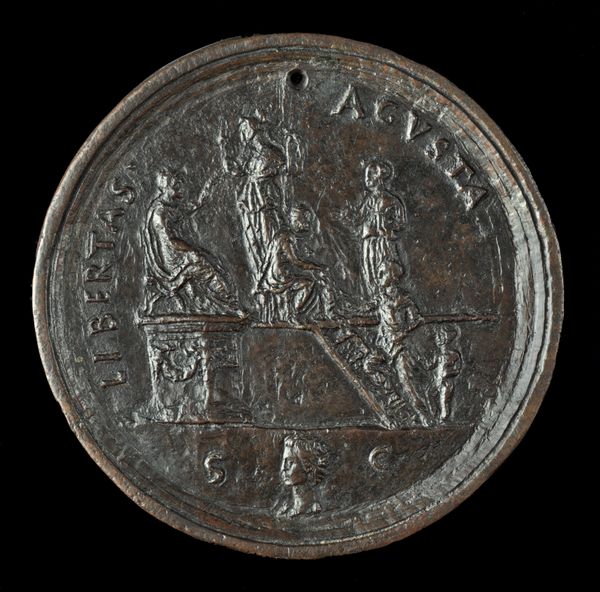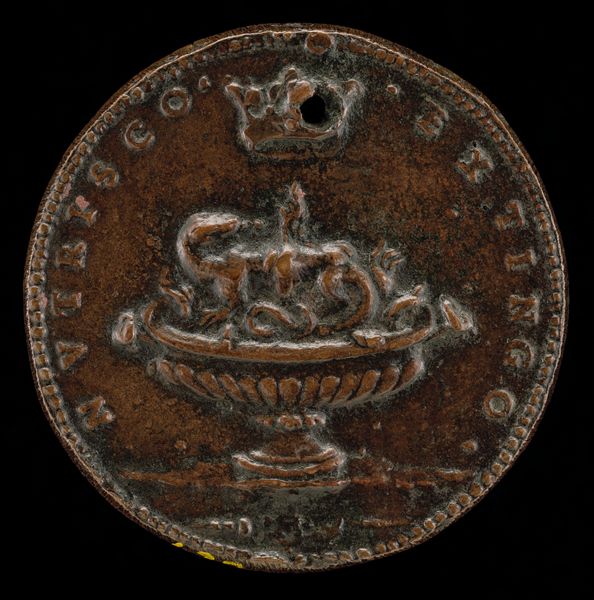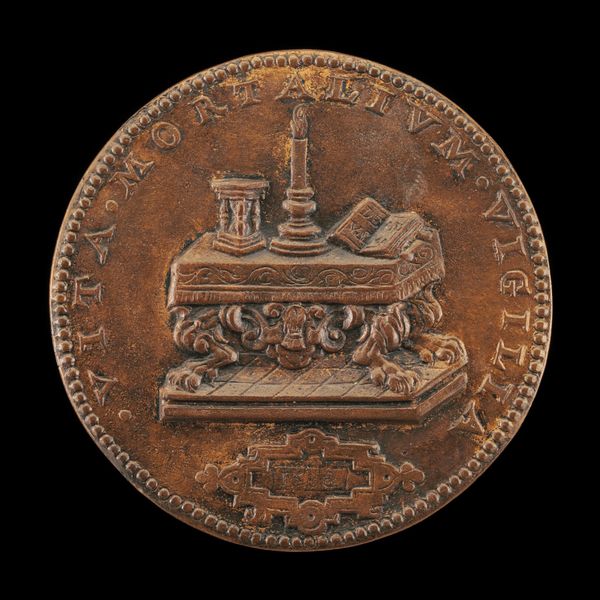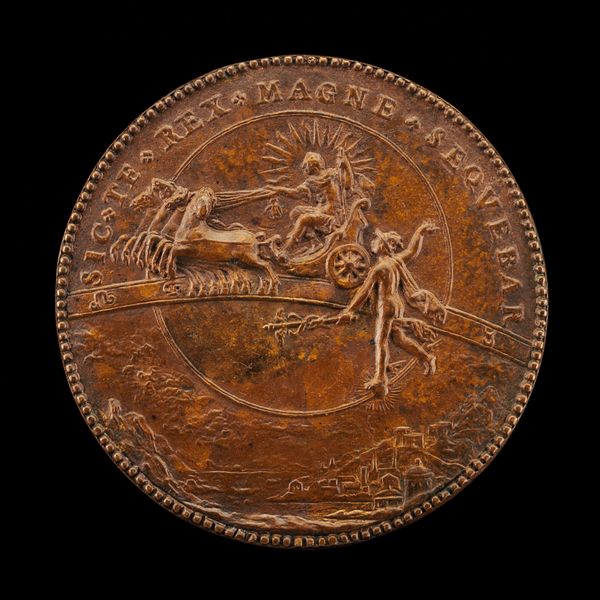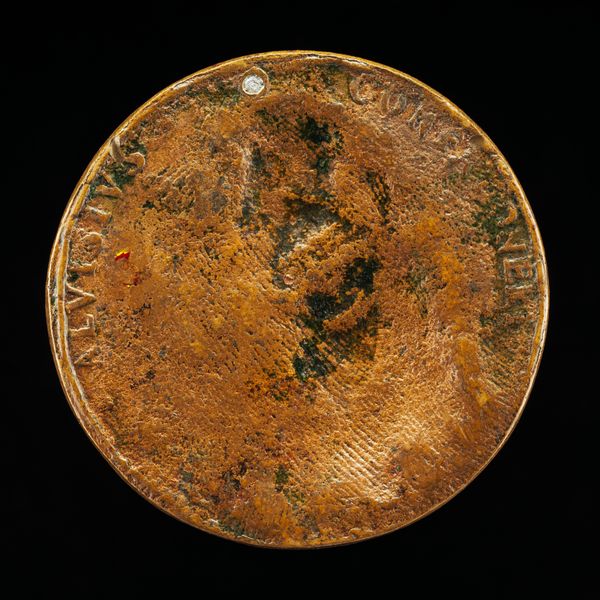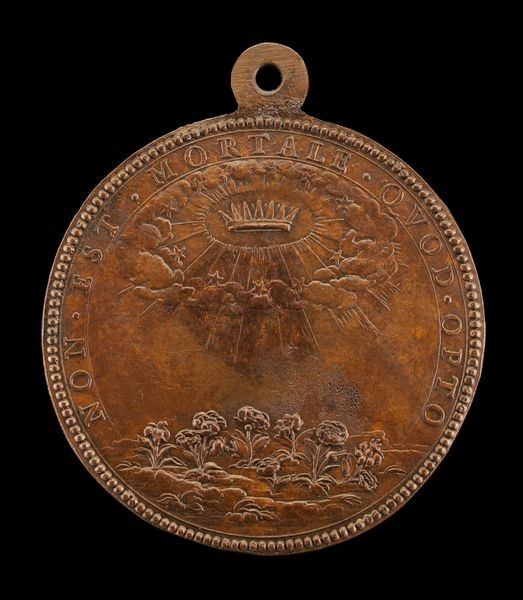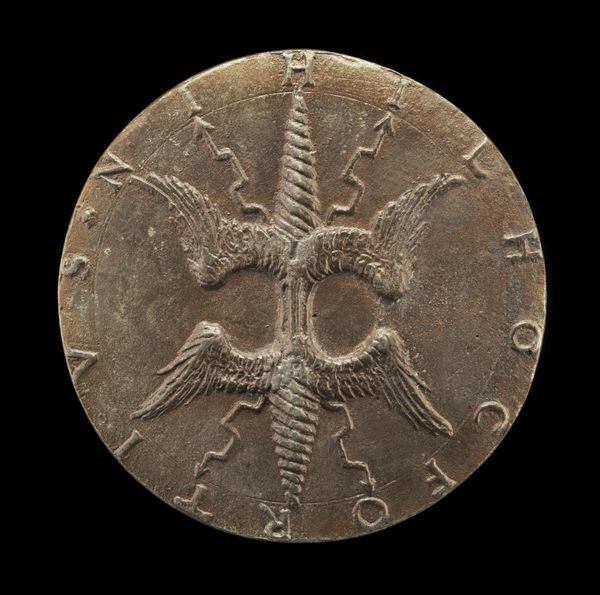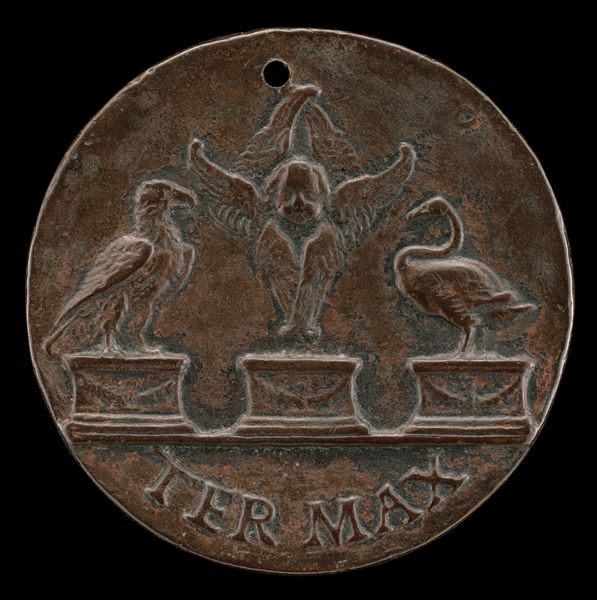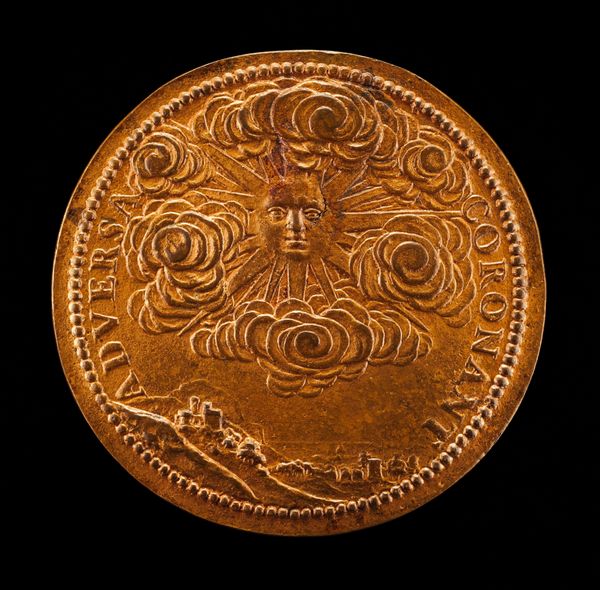![Vase in a Landscape [reverse] by Master IAC. URB.](/_next/image?url=https%3A%2F%2Fd2w8kbdekdi1gv.cloudfront.net%2FeyJidWNrZXQiOiAiYXJ0ZXJhLWltYWdlcy1idWNrZXQiLCAia2V5IjogImFydHdvcmtzLzY2OWQ1YWE3LWUzMTMtNGVkYi1hOWQ0LTkzZjdmNjJjMjMzZS82NjlkNWFhNy1lMzEzLTRlZGItYTlkNC05M2Y3ZjYyYzIzM2VfZnVsbC5qcGciLCAiZWRpdHMiOiB7InJlc2l6ZSI6IHsid2lkdGgiOiAxOTIwLCAiaGVpZ2h0IjogMTkyMCwgImZpdCI6ICJpbnNpZGUifX19&w=3840&q=75)
relief, bronze, sculpture
#
medal
#
sculpture
#
relief
#
bronze
#
figuration
#
11_renaissance
#
sculpture
#
history-painting
#
italian-renaissance
Dimensions: overall (diameter): 5.16 cm (2 1/16 in.) gross weight: 50.57 gr (0.111 lb.) axis: 1:00
Copyright: National Gallery of Art: CC0 1.0
Curator: I’m immediately struck by its diminutive scale, almost intimate. It looks like a portal to another world. Editor: Indeed. Here we have a bronze relief crafted by Master IAC. URB. in 1554, titled "Vase in a Landscape [reverse]". It is a striking example of Renaissance medal work. The patination adds a layer of complexity, wouldn't you agree? Curator: Absolutely. The texture feels rich and aged, like gazing upon something unearthed from centuries ago. It seems more tactile than visual at first glance. It begs to be touched. Does that impulse betray a purely sensual apprehension? Editor: Not at all. Touch allows engagement that parallels close scrutiny. The composition is quite clever. A classical vase is centered. Beneath it, a landscape unfolds—a townscape at left mirrored by craggy hills at right. Note the inscription encircling the relief's edge. The text emphasizes the medal’s historical function, commemorating both subject and patron. Curator: That inverted landscape has a dreamlike quality. It’s as if the vase is dreaming it, or perhaps drawing it into being. The figures in the landscape are minuscule yet the rendering has incredible definition. There's a distinct contrast between the central vase and the almost frantic detailing of the rest of the composition. Is it a reflection on history’s chaotic unfolding versus art’s capacity to frame it? Editor: That contrast underscores the Renaissance fascination with antiquity filtered through humanist perspectives. We find classical forms juxtaposed against close observation of nature and lived experience. The very medium—bronze—cites the past while the miniaturist approach echoes manuscript illumination traditions. There is perhaps tension at play between permanence and ephemerality. Curator: It leaves you contemplating what’s contained versus what’s boundless, fixed forms and constant flux. A conversation about what art *does* in relation to time and our experience of it, rather than a mere depiction. The vase as container, landscape as process... fascinating! Editor: Indeed, a dense dialogue rendered within the confines of a handheld object. Quite ingenious, really.
Comments
No comments
Be the first to comment and join the conversation on the ultimate creative platform.
